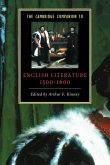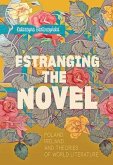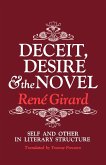Winner of the Christian Gauss Award for excellence in literary scholarship from the Phi Beta Kappa SocietyHaving excavated the world's earliest novels in his previous book, literary historian Steven Moore explores in this sequel the remarkable flowering of the novel between the years 1600 and 1800-from Don Quixote to America's first big novel, an homage to Cervantes entitled Modern Chivalry. This is the period of such classic novels as Tom Jones, Candide, and Dangerous Liaisons, but beyond the dozen or so recognized classics there are hundreds of other interesting novels that appeared then, known only to specialists: Spanish picaresques, French heroic romances, massive Chinese novels, Japanese graphic novels, eccentric English novels, and the earliest American novels. These minor novels are not only interesting in their own right, but also provide the context needed to appreciate why the major novels were major breakthroughs. The novel experienced an explosive growth spurt duringthese centuries as novelists experimented with different forms and genres: epistolary novels, romances, Gothic thrillers, novels in verse, parodies, science fiction, episodic road trips, and family sagas, along with quirky, unclassifiable experiments in fiction that resemble contemporary, avant-garde works. As in his previous volume, Moore privileges the innovators and outriders, those who kept the novel novel.In the most comprehensive history of this period ever written, Moore examines over 400 novels from around the world in a lively style that is as entertaining as it is informative. Though written for a general audience, The Novel, An Alternative History also provides the scholarly apparatus required by the serious student of the period. This sequel, like its predecessor, is a "zestfully encyclopedic, avidly opinionated, and dazzlingly fresh history of the most 'elastic' of literary forms" (Booklist).
In this second volume of his ambitious study on the novel, Moore cheekily continues his deconstruction of classic works from the medium's most formative centuries. Mischievous humor and a range of contemporary references are often the sugar to Moore's dense analytical medicine: The 40-Year-Old Virgin comes up in the section on Don Quixote, Pat Benatar makes an appearance as well. Refusing to simply connect the dots between canonized works, Moore chooses instead to catalog the 'hundreds of little-known novels that not only provide context for [a] dozen or so classics, but are interesting in their own right.' It's this rigorous aim that gives the book velocity. This is a must-read for those interested in studying the novel's long evolution from less traditional angles. Publisher's Weekly








